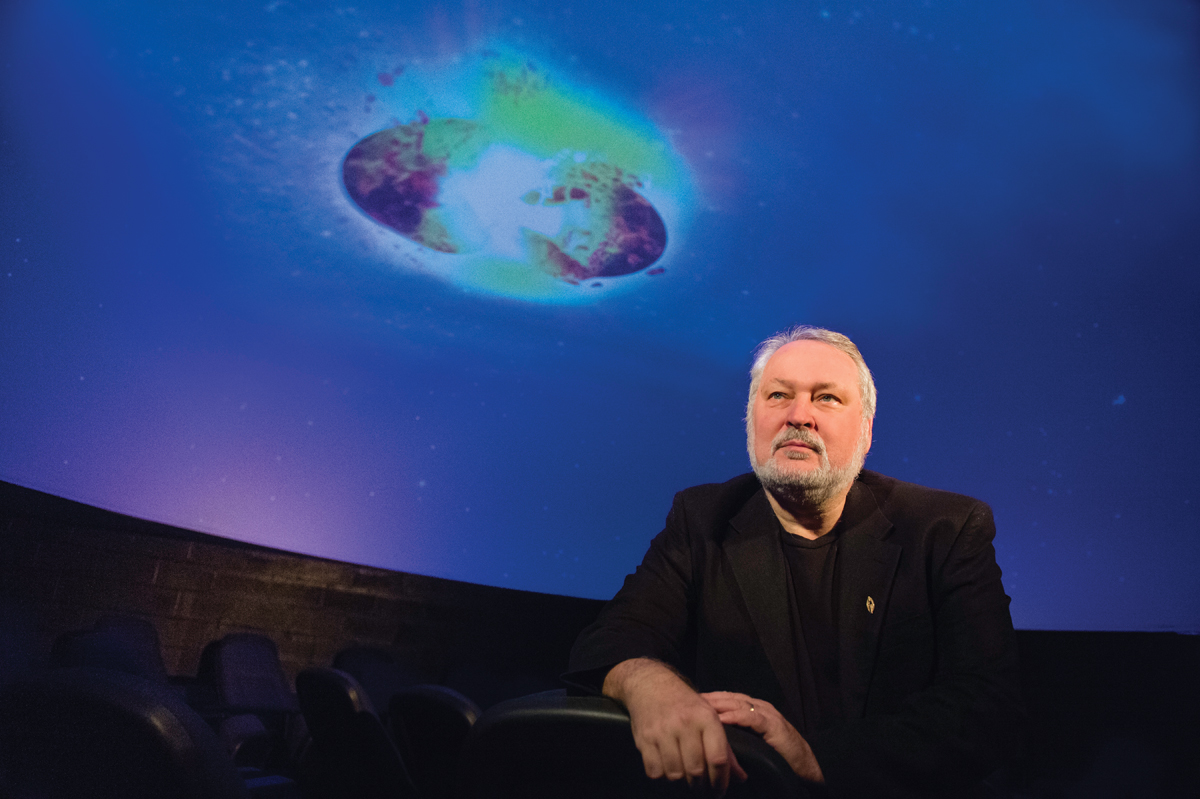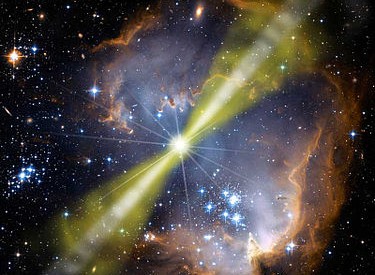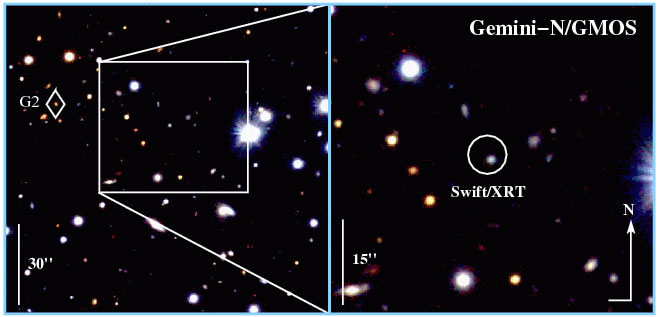the biggest, baddest BOOM
Jemma Everyhope-Roser
Dieter Hartmann has always been keen on explosions.
Now he can study the most thrilling of them all.
“It’s raining like crazy outside. It’s a perfect time for telling stories.” Dieter Hartmann scheduled our phone interview for Independence Day. His son has come up from Greenville for a barbecue, and I get the feeling that Hartmann’s family is waiting for him in the other room to finish our call. But Hartmann can’t resist the chance to tell his favorite story.
“When you look back, a long, long time ago, at what galaxies were like, versus what they’re like today, with their metals and their gasses, that is the question of cosmological evolution, and that is what I’m interested in,” he explains. “But I’ve always liked explosions, my entire life.”
If you Google “Dieter Hartmann, astrophysicist” one of the top five hits will be titled “An Expert in Explosives,” and in it, Dieter Hartmann describes his passion for explosions, starting as a boy in Germany watching the Apollo rockets boom upwards and vault into space. After playing soccer professionally and spending a year in the military, he completed a master’s degree in physics and won the Fulbright that would bring him to the University of California at Santa Cruz. It was there he’d discover his love for the best and the brightest explosions of all.
When I ask him about the biographical information on the site, Hartmann laughs and explains, “NASA—it’s actually done via the University of Chicago—wanted to have a few scientists reach out and say high-energy physicists are people too and this was why they became scientists. It was rather fun sharing it.”
I can tell from the tone in his voice that Hartmann wants to get back to telling the story that’s most important to him—not his personal history, but that of the universe itself.
Gamma-ray bursts: the brightest and fastest of all
At Santa Cruz, where Hartmann was working on his Ph.D., he was intensely interested in supernovas. As explosions go, it was hard to beat them for size, but Hartmann was looking for even bigger, badder booms. He’d already switched his focus to a relatively unexplored and newly discovered phenomenon, gamma-ray bursts.
At that time, no one really knew what they were.
Because of Hartmann’s interest in nuclear astrophysics and gamma-ray astronomy, Clemson University’s Don Clayton, who was leading and defining the university’s astrophysics program, invited Hartmann to join the faculty. It was only after Hartmann came to Clemson when a final breakthrough occurred in satellite technologies and the gamma-ray bursts could be pinpointed precisely enough to be studied.
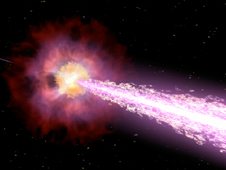 If you saw a flashlight shining from nearby hilltop, its power would be impressive. But if a flashlight beam could reach you from the moon, that would be shocking.
If you saw a flashlight shining from nearby hilltop, its power would be impressive. But if a flashlight beam could reach you from the moon, that would be shocking.“We’d thought we were looking at energetic events that were relatively nearby,” he says. “But there was a real paradigm shift in this field. We went from thinking we had galactic events to cosmological events. Now, that was a different story altogether.”
When astrophysicists thought gamma-ray bursts were happening in our galaxy, they were impressive enough. But when they learned that the gamma-ray bursts were actually happening much farther away, across the vast distances of the universe, it meant that the power involved was huge. If you saw a flashlight shining from nearby hilltop, its power would be impressive. But if a flashlight beam could reach you from the moon, that would be shocking. “If you converted our entire sun into energy, using Einstein’s e equals m times c squared, and annihilated the sun totally,” Hartmann says, “that would the amount of energy we were talking about.”
Gamma-ray bursts are explosions involving the brightest lights and the fastest speeds in the universe, and they’re related to supernovas and the collapse and formation of black holes. Although they happen about a hundred times per day, we’re only able to detect one per day, because they’re not spherical explosions but more like sharp jets (more like a flashlight than a lamp) that have to shine in our general direction for us to see them.
“I have always studied the extreme aspects of the universe,” he says. “When you look out at stars, they’re pretty extreme, but they’re not the hottest things, they’re not the biggest things, they’re not the fastest things. Gamma-ray bursts are extreme, right at the very limit.”
With this new information brought to light, theoretical physicists had to revise their models and the way we conceived of the universe. It’s one of the reasons Dieter Hartmann looks forward to going to work every day: He can test theories by watching explosions in the sky.
But these explosions can do more than tell us about how the universe works—they can tell us about its history. Unlike historians and archeologists, who must piece together the past with what remains in the present, Hartmann can see the past directly: “When light travels from a distant object, I’m seeing the light from long ago. I’m really seeing it how it was many billions of years ago.”
A gamma-ray burst can also tell an astrophysicist about the chemical contents of the universe—Hartmann refers to this as “abundances” and “metallicity.” As the light from the burst travels through space, it passes through gas whose material absorbs a little of the gamma ray. When it passes through an object containing iron, the iron will absorb the some of this light at a particular frequency; when it passes through an object containing nitrogen, it will absorb at a different frequency altogether. By reading the gaps in the gamma rays that arrive here, Hartmann can determine the chemical compositions of the intervening objects.
Hartmann likened this to taking X-rays but told me that this wasn’t exactly right, as X-rays are visual representations with different opacities representing the difference between flesh and bone. Hartmann prefers to call absorption lines “fingerprints.”
“By looking at the absorption of the matter between us and the burst,” Hartmann says, “we can determine metallicity, abundances, and chemistry, and we can determine look-back time.” He goes on to explain that the longer the light has to travel, the redder its frequency becomes, so astrophysicists measure distances in how “redshifted” the light is or how long ago the emission took place. He adds, “In cosmological terms, we’re talking gigayears.”

Amanpreet Kaur, now a doctoral student of Dieter Hartmann, was the lead author of a paper that announced the discovery of a stellar mass black hole in Andromeda, a spiral galaxy about 2.6 million light-years from Earth. Kaur and Dieter Hartmann joined an international team of astronomers, including scientists at Germany’s Max Planck Institute for Extraterrestrial Physics, to publish their findings in February 2012. When a satellite observatory detected an unusual X-ray transient light source in Andromeda, “The brightness suggested that these X-rays belonged to the class of ultraluminous X-ray sources, or ULXs,” Kaur says. “But ULXs are rare. There are none at all in the Milky Way where Earth is located, and this is the first to be confirmed in Andromeda. Proving it required detailed observations.”
The paper announcing the black hole was originally part of Kaur’s master’s thesis. The photo above is by Craig Mahaffey.
Explosions that led to life
In order to understand why metallicity is so important in terms of the universe, you need to know a little about the biggest explosion of all time—the Big Bang. After the Big Bang, the universe had only hydrogen and helium. The other elements, the vast bulk of what we see in the periodic table, was formed later in stars. The building blocks of human life—oxygen, nitrogen, and carbon—were built from the bodies of stars after the initial boom.
“I really like to study how the explosive violence of stars is responsible for creation of new elements,” Hartmann says, “which then get incorporated in the next generation of stars, which then leads to a cycle of chemical enrichment.”
This slow and sure enrichment process happened gently and can be traced by using gamma-ray bursts.
“So, when I see a burst that has happened in the history of the universe, by looking at these absorption lines, I can determine what the metallicity was, say, five gigayears after the Big Bang, coming from a particular direction with intervening sources,” Hartmann says. “So, slowly, we’re assembling what the metals are doing as a function of time in the universe as the universe evolved.”
But the universe isn’t simply handing these snapshots over to Hartmann and his fellow astrophysicists. Unlike some of the other subjects astronomers and cosmologists study, gamma-ray bursts aren’t steady sources of light. You can’t just write up a proposal saying, ‘I need to use this telescope for ten hours and in that time I will determine x.’ No, gamma-ray bursts are called “bursts” because they’re short and fast.
Sometimes you only have seconds to pinpoint the source—and that can only be done from space, because gamma-ray bursts are absorbed by the Earth’s atmosphere. Satellites, robotically detecting and locating the source of a gamma-ray burst, beam the information down to telescopes on Earth.
Worldwide, astronomers interrupt their own work and direct their telescopes toward the gamma-ray burst. Obviously, they can’t record the gamma-ray burst itself (remember, it can’t penetrate our planet’s atmosphere). So they’re looking for the “afterglow,” which is made of lower frequency emissions, including visible optical emissions. The land-based telescopes spend twenty minutes taking spectrums of that. After taking a spectrum, the astronomer uploads it before getting back to work.
“It truly is a global effort,” Hartmann says. “It means we’re all participating in collaborations, in an international network of observers. The community applies resources in a sequence that depends on how fast you need to respond, and a gamma-ray burst is astronomy that takes place on a minutes-to-hours timescale. It really moves you to the fast lane.”
Hartmann directs me to NASA’s ADS, an online service through which the community of astronomers and now physicists share their articles and data.
Right now, Hartmann has been working with NASA on a thirty-year plan, a visionary roadmap as to where NASA should be going in the future. He says it’s “a political process,” in a somewhat weary tone that implies he’d rather look at the afterglows from vast cosmic explosions. He serves as the chair on the Swift satellite’s user community—the Swift satellite is the only one dedicated purely to studying gamma-ray bursts—and overall he’s involved in the data analysis of three out of a dozen satellites that detect gamma-ray bursts.
NASA’s satellites and their robotic detection systems are a key factor in this research, because the reaction time must be so brief.
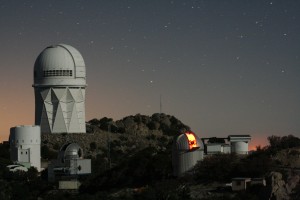 Worldwide, astronomers interrupt their own work and direct their telescopes toward the gamma-ray burst.
Worldwide, astronomers interrupt their own work and direct their telescopes toward the gamma-ray burst.As Hartmann puts it, “You can wake up the next day, and you’ve missed the boat. With a gamma-ray burst, you have only a few minutes, maybe hours if you’re lucky, to do your work. So this is transient astronomy, rapid response, quick.”
It’s strange, to me at least, that such immediacy is necessary when it comes to telling a story that’s been so long in the making. Hartmann’s story, when he tells it, starts with a bang, and then continues in a series of explosions that produce more stars, which in turn produce galaxies, which collide to form larger galaxies, and the universe itself is structured by clusters of dark matter, whose nature, Hartmann says, “we don’t really understand.”
“The process of assembling galaxies and gas evolution in galaxies is one of those cosmic evolution stories.” It’s the longest and most important story of all time that Hartmann’s trying to piece to together, explosion by explosion. It’s far from being understood—and luckily, for us—it’s far from done.
At the end of our conversation, when Hartmann is called away to celebrate Independence Day with his family, I hope for his and his family’s sake that the rain was transient. And here is what I picture: Dieter Hartmann, the man who so enjoys cosmic explosions and the stories they tell, looking up at the night sky to watch the fireworks.
Dieter H. Hartmann is a professor in the Department of Physics and Astronomy. Funding for his research is provided by grants from NASA and the American Astronomical Society. The images appearing in this article are courtesy of NASA. Jemma Everyhope-Roser is the assistant editor of Glimpse.

